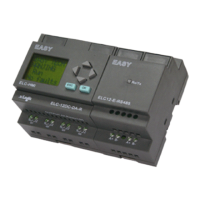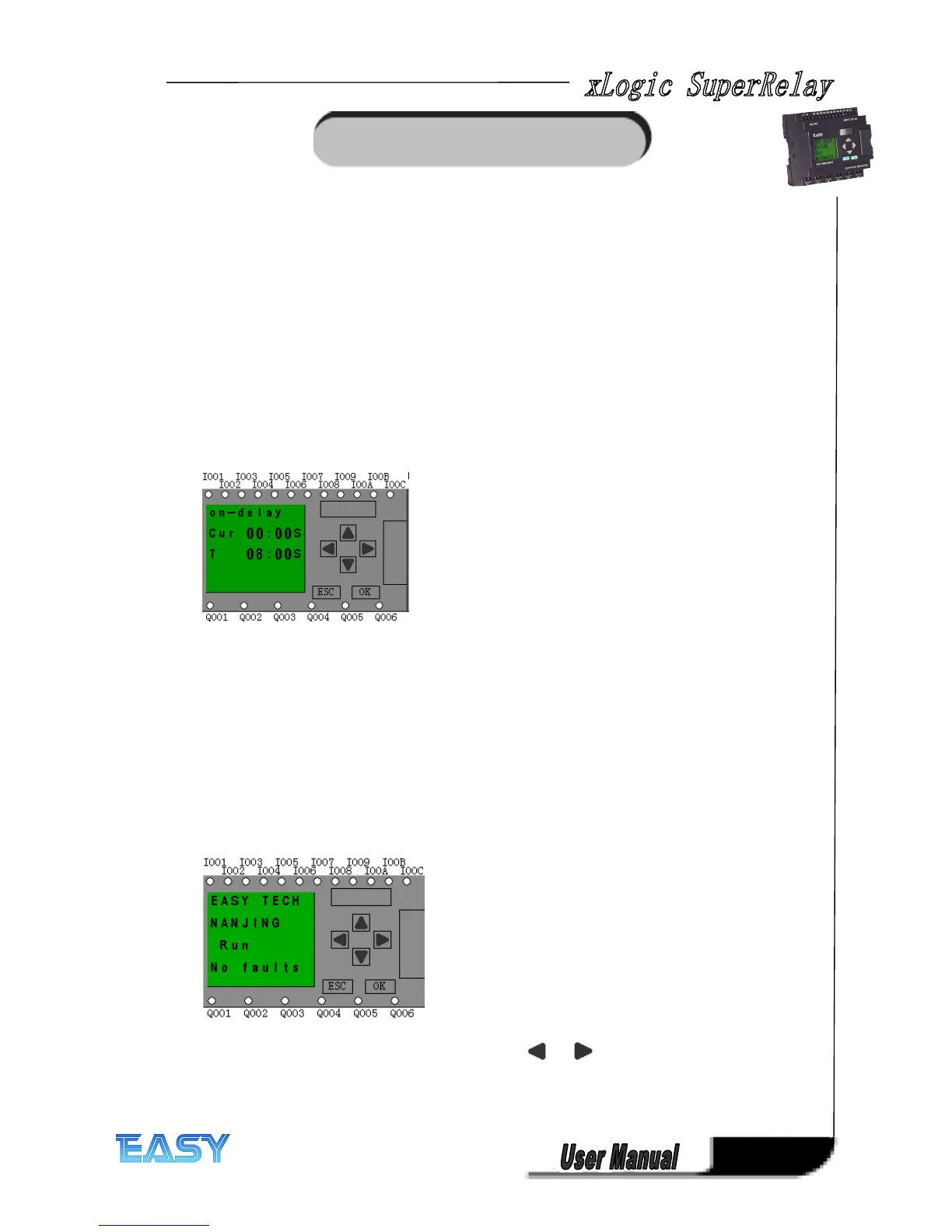163
163
163
163
C
C
C
C hapter
hapter
hapter
hapter 5
5
5
5 .
.
.
. Configuring
Configuring
Configuring
Configuring xLogic
xLogic
xLogic
xLogic
The
The
The
The difference
difference
difference
difference between
between
between
between LCD
LCD
LCD
LCD message
message
message
message of
of
of
of xLogic
xLogic
xLogic
xLogic and
and
and
and the
the
the
the traditional
traditional
traditional
traditional LCD
LCD
LCD
LCD message
message
message
message
In the use of traditional LCD message, it can only display some fixed and simple message such
as time, I/O status etc. It can not display the counter value, timer value and analogue value.
And all the LCD message screens are set and programmed by the program engineer, so users
can not change, add, or remove any message screen. The operation of the traditional LCD
message screen is not easy to use for the end users. Regarding the above short comings of the
traditional HMI module, we have adopted a new method to develop the xLogic, and offer to user
a free, and easily LCD instruction. The powerful function of the LCD (can be called HMI) is as
follows:
1. Providing 32 Human-Machine Interfaces
When using xLogicsoft
xLogicsoft
xLogicsoft
xLogicsoft , users can add HMI according to demand not more than 32. And the
non-alarming interfaces can be seen on LCD panel.
2. Providing Several HMI Blocks
Besides the system cover and system input/output blocks, the message text block can supply
a large number of messages about your program. And the function of those blocks is described
in chapter 3. Please read it in details.
5
5
5
5 .1
.1
.1
.1 Instruction
Instruction
Instruction
Instruction of
of
of
of xLogic-HMI
xLogic-HMI
xLogic-HMI
xLogic-HMI
After being powered on, xLogic shall self-check program stored in the main module.
If the program is accurate, then the main module will be running, meanwhile the system cover
will show as follows:
In xLogicsoft
xLogicsoft
xLogicsoft
xLogicsoft , this interface is defaulted as its initialization screen.
If there are several parameter pages, users may press or key to go to the page you
would like. The last page is the cursor mode:

